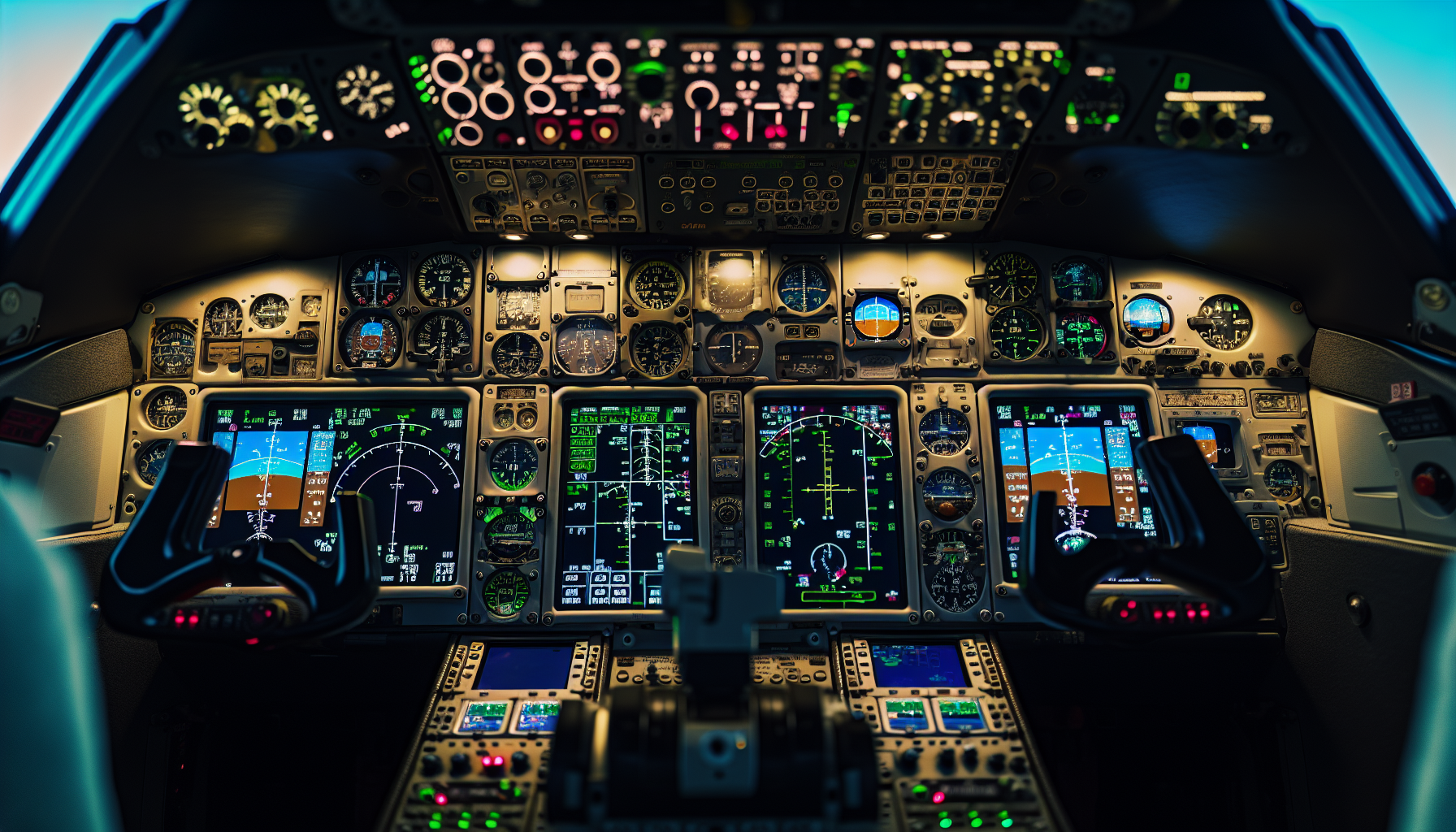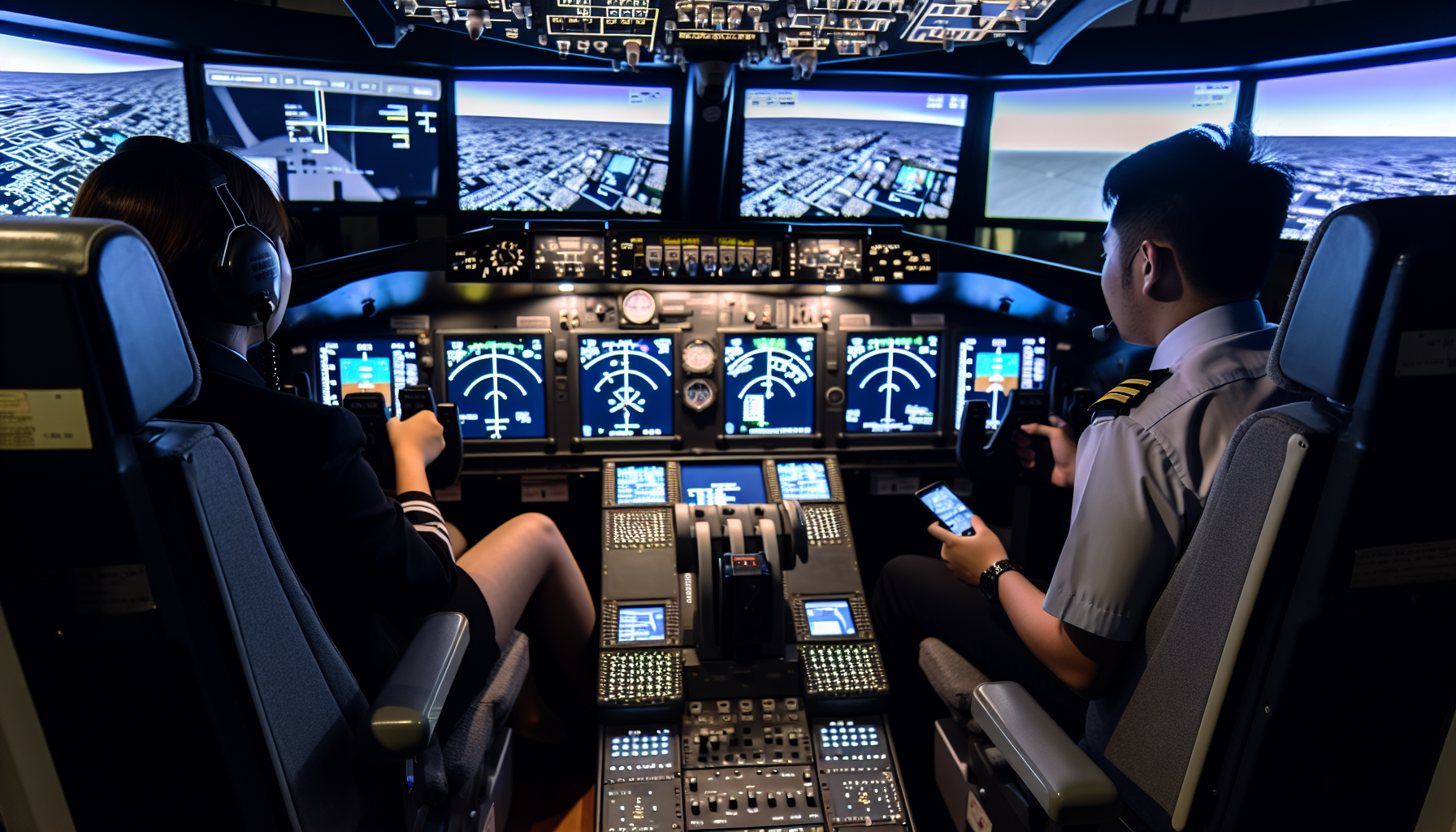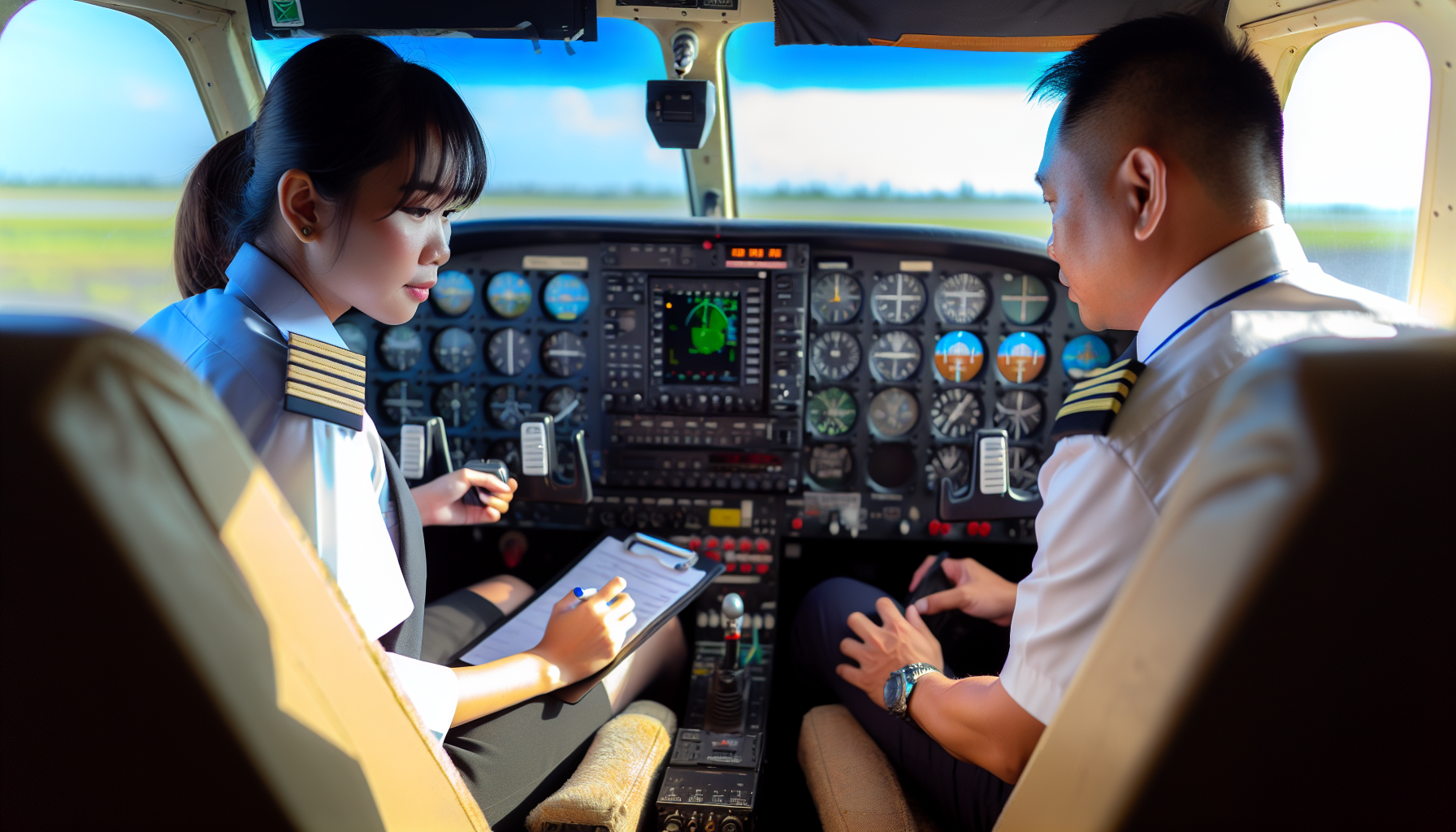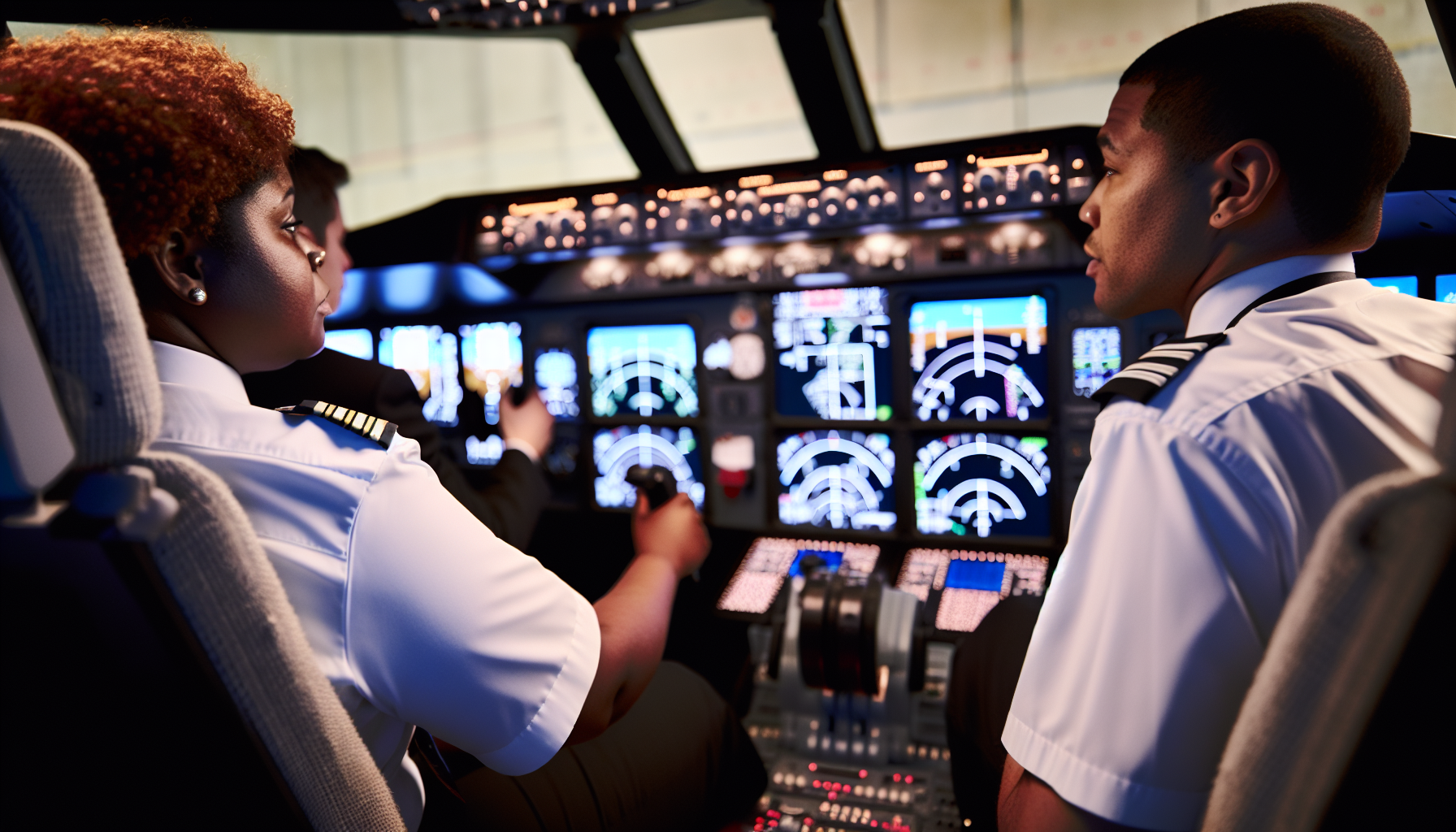Instrument Rating Requirements: A Complete Pilot Guide
Dec 26, 2023
The world of aviation is vast and full of thrilling opportunities. One such opportunity is obtaining an instrument rating add on to your private pilot certificate, which qualifies you to fly in Instrument Flight Rules (IFR).
It's a game-changer for pilots. It not only enhances your flying capabilities but also opens doors to advanced aviation careers. So, are you ready to take a leap and unlock the skies with instrument rating requirements?
Key Takeaways
-
Understand IFR and Instrument Rating requirements, eligibility criteria, and preparation for the FAA knowledge test.
-
Accumulate experience through ground training with a CFI, home study courses, flight hour requirements & simulated instrument time.
-
Demonstrate proficiency during checkride to obtain an Instrument Rating. Maintain regular proficiency checks to advance aviation career opportunities.
Unlocking the Skies: Understanding IFR and Instrument Rating

The journey to obtaining an instrument rating is a transformative one. It empowers pilots by enabling them to:
-
Fly without visual reference to the ground or the horizon, thus broadening their horizons (no pun intended)
-
Expand their capability, particularly advantageous for career opportunities such as charter, corporate, and airline operations
-
Fortify their ability to tackle emergencies and unexpected situations by relying on instruments instead of visual cues
-
Plan cross country flight more consistently, knowing your instrument flight training will prepare you to fly in adverse weather conditions.
-
It prepares pilots for emergency operations, making them safer pilots.
However, the path to securing an instrument rating is not a walk in the park. It requires a private pilot license, completion of ground training, passing the knowledge test, and accumulating the necessary flight hours. All of this needs to be balanced with the need to reduce instrument rating cost as well. Several avenues can be explored for obtaining the required training, such as enrolling in a FAR Part 141 school, studying under FAR Part 61 rules such as hiring a full-time or part-time instructor at a local airport, or taking an accelerated course at your location or at the provider’s site.
Path to an Instrument Rating: Eligibility Criteria
Before you start this significant journey, it’s important to grasp the eligibility criteria. The aspirant must be at least 17 years old, making it an optimal career path immediately after high school. Also, English proficiency is necessary, given that it’s the universal language of aviation. This proficiency is not only a requirement for acquiring an instrument rating, but it also aids in effective communication during flight operations.
Holding a valid Private Pilot Certificate is also a prerequisite for acquiring an instrument rating. This certificate ensures that the aspiring pilot has a foundational understanding of flying, preparing them for the advanced concepts covered in the instrument rating course.
Ground School Insights: Preparing for the Knowledge Test
Instrument rating ground school as the foundation for aspiring instrument-rated pilots. It is the starting point for preparing for the FAA knowledge test and provides the requisite theoretical knowledge for the practical application in flight training.
The ground training for the instrument rating is indeed challenging, but it’s also a rewarding experience that provides insight into:
-
the instruments and equipment used for flight planning and completion
-
the regulations and procedures specific to instrument flying
-
weather interpretation and analysis for instrument flight
-
navigation and communication techniques for instrument flight
By completing ground school training, pilots gain a solid understanding of the principles and concepts necessary for safe and successful instrument flying.
There are multiple avenues to pursue ground school training. One can opt for instructor-led training or home study courses, each offering its unique advantages. While the former provides a structured learning environment with a certified instructor’s guidance, the latter offers flexibility for those who prefer self-paced learning.
Log Ground Training with a Certified Flight Instructor
Taking the instructor-led route for ground school training has its merits. A Certified Flight Instructor (CFI) plays a pivotal role in this journey by providing instruction and guidance, enabling the student to understand and implement the principles and procedures of IFR flying. The CFI ensures that students have a sound understanding of IFR concepts before progressing to actual flight training.
Logging ground training hours with a Certified Flight Instructor is particularly beneficial for obtaining an instrument rating. This process not only fulfills the requirement of 15 hours of simulated or actual instrument time with a CFII (Certified Flight Instructor - Instrument) (if spent training with a simulator), but it also ensures that the training received is of high quality. The ground training sessions encompass:
-
Studying instrument rating airplane knowledge
-
Preparing for the instrument rating airplane knowledge test
-
Attending a ground school training course to ensure the highest standard of instruction.
Home Study Course Options
For those who prefer a more flexible approach, home study courses are a viable option. Some of the most effective home study courses for instrument rating preparation include Flight Nerd Air Force's Briefing Room Squadron, ASA's Instrument Online Ground School, and Sporty’s Instrument Rating Course. All of these resources will help you succeed in your instrument flight training.
These courses typically cost between $300 and $500 and require around 10 to 20 hours of study time. However, Flight Nerd Air Force's Briefing Room Squadron offers a much more affordible option with the same quality of training. The materials and resources offered in these courses vary depending on the provider, but they often include:
-
Textbooks
-
Study guides
-
Practice exams
-
Online course modules
-
Video lectures
-
Flight planning tools
-
Access to a question bank for practice questions
Accumulating Experience: Flight Hour Requirements
Accumulating the required flight hours is a critical component of obtaining an instrument rating. The FAA instrument rating requirements part 61 require that individuals aspiring for an instrument rating must have a total of fifty hours of cross-country flight training. Ten of those hours need to be in real or simulated instrument conditions. This requirement, although demanding, ensures that pilots are well-versed with the complexities of cross-country navigation under IFR conditions.
The path to fulfilling this flight training requirement involves mastering an array of procedures and skills, including Instrument Landing System (ILS) approach, RNAV approach, and VOR approach. Pilots must log three hours of IFR training before they undertake the practical test. This has to be done within two calendar months of the exam.
Cross Country Flight Procedures Mastery
Cross-country flight eligibility is a crucial aspect that is evaluated by the Designated Pilot Examiner (DPE) during the checkride. The primary procedures for a cross-country flight under instrument flight rules include:
-
Drafting a comprehensive flight plan and checklist
-
Executing weather analysis
-
Adhering to pertinent instrument departure procedures
-
Fulfilling the criteria for cross-country flight time accumulation.
Proficiency in the following navigation skills is indispensable for cross-country IFR flights:
-
Weather analysis
-
Route selection
-
Navigation techniques
-
Use of radio navigation techniques
Therefore, during the comprehensive and expensive IFR training flight, it’s important to verify computations and be aware of cross-country flight prerequisites.
Simulated Instrument Time with a Safety Pilot
Simulated instrument time also forms a significant requirement in the pursuit of becoming an instrument-rated pilot. This term pertains to the time allocated for practicing instrument flying using a view-limiting device during VFR conditions with a safety pilot, or through an FAA-approved flight simulator with an authorized instructor present.
The safety pilot plays an essential role during this process by providing visual reference and monitoring the flight while the pilot under the hood focuses on instrument flying. This time can be logged in the safety pilot’s logbook as simulated instrument time. It’s important to note that a pilot can also log simulated instrument time while flying solo.
Advanced Training Devices: Simulator and Flight Training Device Use

As technology continues to revolutionize the aviation industry, advanced training devices have become integral to flight training. Full flight simulators, flight training devices, and aviation training devices provide a lifelike and immersive training environment, allowing pilots to practice instrument procedures, flight maneuvers, and emergency scenarios in a safe and controlled setting.
These devices not only help build flight time and refine techniques but also replicate various weather conditions and difficult scenarios that may not be easily replicated in actual flight. Simulators also provide a chance to simulate various weather conditions and difficult scenarios that may not be easily replicated in actual flight. This assists pilots in developing their instrument flying skills, decision-making abilities, and situational awareness, ultimately improving their readiness for the instrument rating.
The Practical Side: Flight Training for Instrument Rating
While the theoretical knowledge acquired from ground school training is fundamental, practical flight training is what genuinely prepares a pilot for acquiring an instrument rating. This stage of training is where the rubber meets the road, or rather, where the plane meets the sky. It involves creating personalized training plans and lessons that are specifically designed to meet the needs and goals of the individual student pilot. This includes a combination of ground instruction and flight training, focusing on topics such as:
-
Instrument flight rules (IFR) regulations
-
Navigation
-
Instrument departures
-
Instrument enroute flight
-
Instrument arrivals and approaches
-
Weather interpretation
-
Instrument approaches
-
Emergency procedures
Full flight simulator sessions can be an extremely helpful component of this training. They offer a realistic and immersive training experience which includes a combination of classroom instruction, pre-flight briefing, simulator flight exercises, and post-flight debriefing. These sessions are designed to replicate various instrument flight scenarios, such as instrument approaches, holds, navigation, and emergency procedures, providing a safe environment for pilots to hone their skills.
Tailored Instruction from a Certified Flight Instructor
Personalized instruction is one of the key benefits of taking the instructor-led route for flight training. A Certified Instrument Flight Instructor (CFII) plays a pivotal role in this journey by providing instruction and guidance, enabling the student to understand and implement the principles and procedures of IFR flying. The CFII ensures that students have a sound understanding of IFR concepts before progressing to actual flight training.
Moreover, customized instruction allows for instant feedback and correction, enhancing the pilot’s understanding and implementation of instrument flying techniques. The ground training sessions include:
-
studying instrument rating airplane knowledge
-
preparing for the instrument rating airplane knowledge test
-
participating in a ground school training course to maintain the highest quality of instruction.
Full Flight Simulator Sessions

Full flight simulators offer a realistic and immersive experience for pilots to practice instrument flying skills. They enable pilots to become accustomed to various weather conditions, emergency scenarios, and complex instrument procedures in a safe and secure environment. These simulators can replicate particular aircraft models, providing pilots with the opportunity to familiarize themselves with the cockpit layout and systems before flying the actual aircraft.
The sessions are designed to provide a realistic and immersive instrument training experience. This includes a combination of classroom instruction, pre-flight briefing, simulator flight exercises, and post-flight debriefing. The simulator exercises are intended to simulate various instrument flight scenarios, such as instrument approaches, holds, navigation, and emergency procedures. The instructor will guide the student through each exercise, providing feedback and guidance to help them develop their instrument flying skills.
Navigating the Checkride: Instrument Rating Practical Test

The pursuit of acquiring an instrument rating concludes with the practical (flight) test. This final evaluation is conducted by an FAA inspector or a designated pilot examiner and assesses the applicant’s skills following the FAA’s Instrument Rating Airman Certification Standards. The practical test serves as a final examination to evaluate the applicant’s proficiency in the areas of operation outlined in these standards.
The areas of operation evaluated during the test are outlined in the FAA’s Instrument Rating Airman Certification Standards. Additionally, the practical test also evaluates the pilot’s ability to use crew resource management and airspeed indicator during the test. These tools are critical for carrying out safe and efficient operations of the aircraft.
Areas of Operation Assessed During the Test
The areas of operation covered by the FAA’s Instrument Rating Airman Certification Standards for the practical test encompass:
-
Preflight Preparation
-
Preflight Procedures
-
Takeoffs and Landings
-
In-flight Maneuvers
-
Instrument Approaches
The FAA evaluates the pilot’s competence in navigation and instrument systems by assessing their comprehension of aeronautical knowledge, risk management, and flight proficiency standards.
Moreover, the weather information interpretation skills evaluated during the instrument rating practical test and instrument rating knowledge test encompass:
-
Knowledge of weather observation and forecast products
-
Interpretation of weather information
-
Analysis of weather conditions for flight planning and decision-making
The test also evaluates the pilot’s communication and clearance interpretation abilities.
Crew Resource Management
Crew Resource Management (CRM) is a key component of the instrument rating practical test. CRM facilitates improved situational awareness, risk mitigation, and efficient teamwork during the test.
Strong decision-making skills, problem-solving techniques, effective teamwork, and managing human errors are essential for effective crew resource management in IFR operations. These practices can help prevent and mitigate the effects of human factors such as:
-
fatigue
-
stress
-
workload
-
distraction
-
complacency
Maintaining Proficiency: The Instrument Proficiency Check

Once you have acquired your instrument rating, the journey is far from over. Indeed, it’s just the commencement. Maintaining your instrument rating proficiency involves regular instrument proficiency checks (IPCs) and staying current with IFR procedures. An IPC is necessary if your proficiency lapses, as per the approach currency requirements outlined in 14 CFR 61.57.
An Instrument Proficiency Check (IPC) involves logging six instrument approaches, including holding procedures and tasks, as well as intercepting and tracking courses via navigational electronic systems. It’s worth noting that a Certified Flight Instructor-Instrument (CFI-I), Designated Pilot Examiner (DPE), or Federal Aviation Administration (FAA) inspector can administer an IPC.
Advancing Your Aviation Career: Beyond the Instrument Rating
An instrument rating is more than just a qualification; it’s a gateway to a multitude of opportunities in the aviation industry. Having an instrument rating under your belt significantly expands your career prospects, with increased opportunities for flight time due to fewer restrictions on flying and the ability to fly by instruments.
After earning an instrument rating, pilots may pursue additional ratings such as type ratings for specific aircraft, commercial pilot certificates, flight instructor certificates, and other advanced pilot ratings, including the instrument airplane rating. This qualification is particularly advantageous for commercial pilots, instructors providing private pilot ground courses related to Instrument Flight Rules (IFR) ratings, and technicians maintaining and repairing equipment such as Instrument Landing Systems and Very High Frequency Omnidirectional Range (VORs).
Summary
In conclusion, obtaining an instrument rating is a significant milestone in a pilot’s career. It not only enhances your flying capabilities but also broadens your horizons in the aviation industry. The journey to obtaining an instrument rating might be demanding, but it’s undoubtedly rewarding. So, gear up, prepare yourself for an exciting journey, and get ready to unlock the skies!
Frequently Asked Questions
What is required for instrument rating?
In order to obtain an Instrument Rating, you must be at least 17 years old and be proficient in the English language. You must also hold a Private Pilot Certificate and have logged at least 50 hours of cross-country flight time as pilot in command and 40 hours of actual or simulated instrument time on the areas of operation listed in 61.65(c).
What medical is required for instrument rating?
In order to obtain an instrument rating, you must hold a valid third class FAA medical certificate, which can only be acquired through a routine medical examination administered by an FAA-designated Aviation Medical Examiner.
How many hours do you need to get IFR?
IFR certification requires a minimum of 40 hours of flight time, 15 of which should be with an instructor.
What are the benefits of obtaining an instrument rating?
An instrument rating provides pilots with the ability to fly without visual reference to the ground, enabling them to pursue wider career opportunities and effectively manage challenging situations.
What are the eligibility criteria for obtaining an instrument rating?
To obtain an instrument rating, a candidate must be at least 17 years old, proficient in English and hold a valid Private Pilot Certificate.
